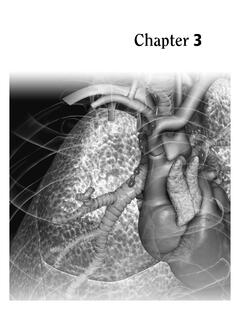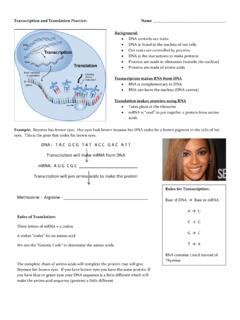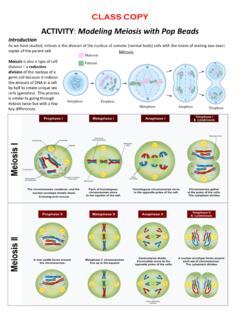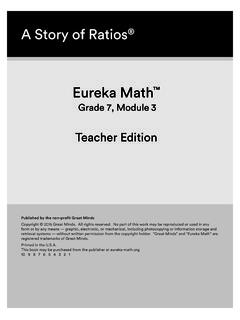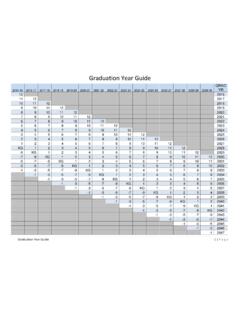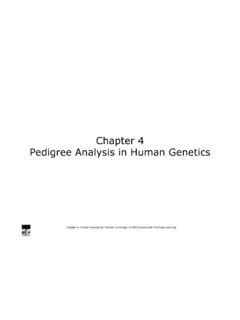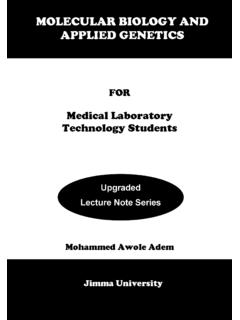Transcription of Genetics Review Key - Jeffco Public Schools
1 Genetics Review B. Sample Multiple Choice Questions 1. A represents the dominant allele and a represents the recessive allele of a pair. If, in 1000 offspring, 500 are aa and 500 are of some other genotype, which of the following are most probably the genotypes of the parents? a. Aa and Aa b. Aa and aa c. AA and Aa d. AA and aa e. aa and aa 2. A form of vitamin D-resistant rickets, known as hypophosphatemia, is inherited as an X-linked dominant trait. If a male with hypophosphatemia marries a normal female, which of the following predictions concerning their potential progeny would be true? a.
2 All of their sons would inherit the disease b. All of their daughters would inherit the disease c. About 50% of their sons would inherit the disease d. About 50% of their daughters would inherit the disease e. None of their daughters would inherit the disease 3. Which of the following best describes the parents in a testcross? a. One individual has the dominant phenotype and the other has the recessive phenotype. b. Both individuals are heterozygous. c. Both individuals have the dominant phenotype. d. Both individuals have the recessive phenotype. e. Both individuals have an unknown phenotype.
3 4. Which of the following is the most likely explanation for a high rate of crossing-over between two genes? a. The two genes are far apart on the same chromosome. b. The two genes are both located near the centromere. c. The two genes are sex-linked. d. The two genes code for the same protein. e. The two genes are on different chromosomes. 5. DNA replication can be described as a. semiconservative b. conservative c. degenerative d. dispersive e. radical 6. In the pedigree below, squares represent males and circles represent females. Individuals who express a particular trait are represented by shaded figures.
4 Which of the following patterns of inheritance best explains the transmission of the trait? a. Sex-linked dominant b. Sex-linked recessive c. Autosomal recessive d. Autosomal dominant e. Incompletely dominant A male fruit fly (Drosophila melanogaster) with red eyes and long wings was mated with a female with purple eyes and vestigial wings. All of the offspring in the F1 generation had red eyes and long wings. These F1 flies were test crossed with purple-eyed, vestigial-winged flies. Their offspring, the F2 generation, appeared as indicated below. F2 Generation 125 red eyes, long wings 124 purple eyes, vestigial wings 18 purple eyes, long wings 16 red eyes, vestigial wings 283 Total 7.
5 If in the F1 and F2 generations the same characteristics appeared in both male and females, it would be safe to assume that these traits for eye color and wing a. are sex-linked b. vary in dominance according to sex c. are sex-influenced characteristics d. are autosomal characteristics e. follow the Mendelian rule of independent assortment 8. In the F2 generation, the results are best explained by the fact a. the test cross with the F1 flies resulted in sterile offspring b. these genes for eye color and wing shape do not pass through the F1 generation c. these genes for eye color and wing shape are found on the same chromosome d.
6 Crossing over decreases variability e. the genes are sex-linked 9. If a single locus controls wing shape, then the alleles for this gene act a. dominant-recessive alleles b. incomplete-dominance alleles c. codominant alleles d. multiple alleles e. variable alleles 10. What would be the sequence of bases of an mRNA molecule that was transcribed from the sequence of DNA bases shown below? GTAGTAGGT a. GTAGTAGGT b. CAUCAUCCA c. UCGUCGUUC d. AUGAUGAAU e. CATCATCCA 11. Some strains of the bacterium Streptococcus pyogenes secrete poisonous substances called exotoxins. The gene encoding the exotoxins are thought to have originated in bacteriophages, which are viruses that infect bacteria.
7 Which of the following is the most likely mechanism by which the S. pyogenes acquired the ability to produce exotoxins? a. Bacteriophages engulfed cellular debris from dead bacteria. b. Bacteriophages in the environment activated bacterial cell division. c. Bacteriophage DNA became integrated in the bacterial chromosome. d. bacteriophage proteins were absorbed into bacterial cells by endocytosis. Questions 12-14 refer to an experiment that was performed to separate DNA fragments from four samples radioactively labeled with 32P. The fragments were separated by gel electrophoresis. The visualized bands are illustrated in the figure below.
8 12. The electrophoretic separation of the pieces of DNA in each of the four samples was achieved because of differential migration of the DNA fragments in an electric field. This differential migration was caused by the a. relative amounts of radioactivity in the DNA b. number of cleavage points per fragment c. size of each fragment d. overall positive charge of each fragment e. solubility of each fragment 13. The DNA was labeled with 32P in order to a. stimulate DNA replication b. inhibit the uptake of unlabeled ATP c. show which fragments included the 5' end and which fragments included the 3' end d.
9 Visualize the fragments e. speed up the rate of separation by electrophoresis 14. Which of the following is an additional use of the gel electrophoresis technique? a. To express a gene b. To separate proteins in a mixture c. To ligate DNA fragments d. To transform E. coli e. To amplify genes Questions 15-17 . A scientist is using an ampicillin-sensitive strain of bacteria that cannot use lactose because it has a nonfunctional gene in the lac operon. She has two plasmids. One contains a functional copy of the affected gene of the lac operon, and the other contains the gene for ampicillin resistance.
10 Using restriction enzymes and DNA ligase, she forms a recombinant plasmid containing both genes. She then adds a high concentration of the plasmid to a tube of the bacteria in a medium for bacterial growth that contains glucose as the only energy source. This tube (+) and a control tube (-) with similar bacteria but no plasmid are both incubated under the appropriate conditions for growth and plasmid uptake. The scientist then spreads a sample of each bacterial culture (+ and -) on each of the three types of plates indicated below. 15. If no new mutations occur, it would be most reasonable to expect bacterial growth on which of the following plates?
